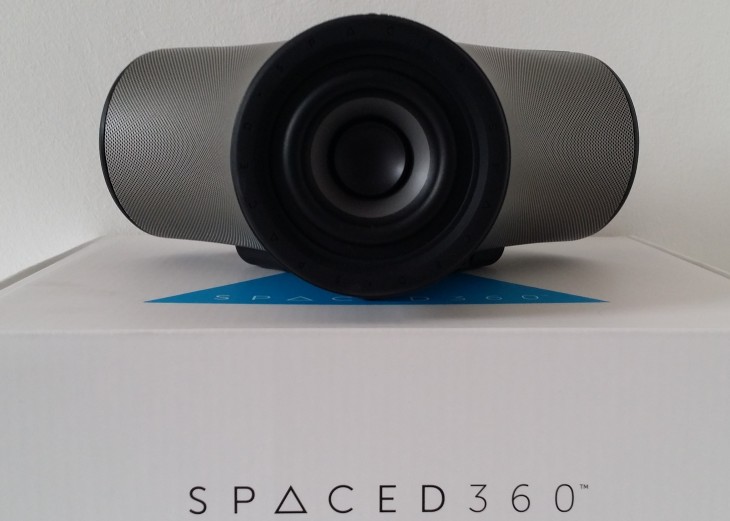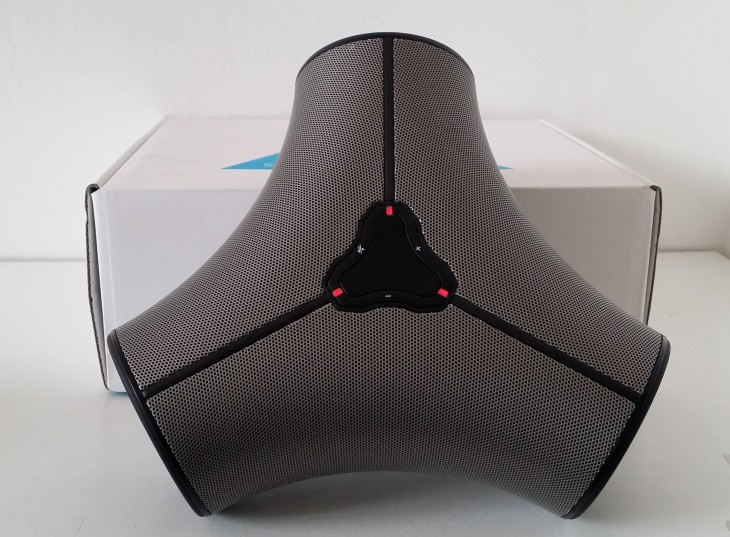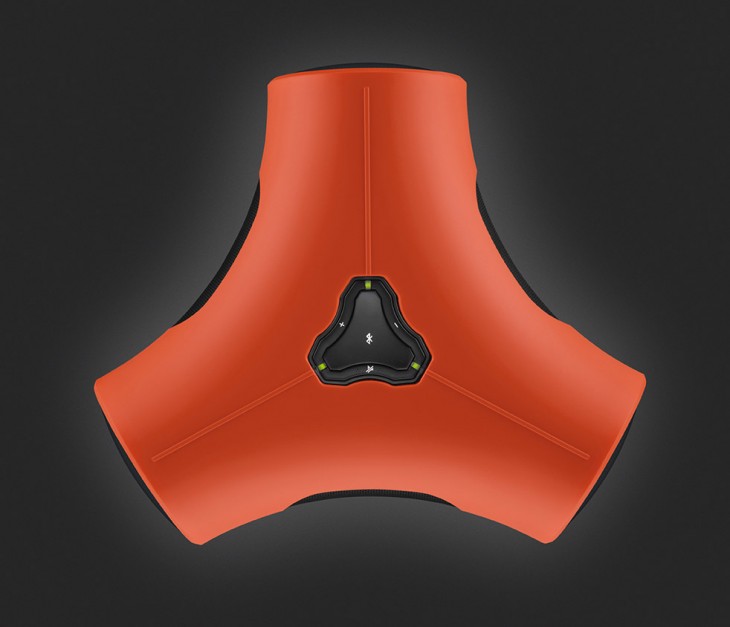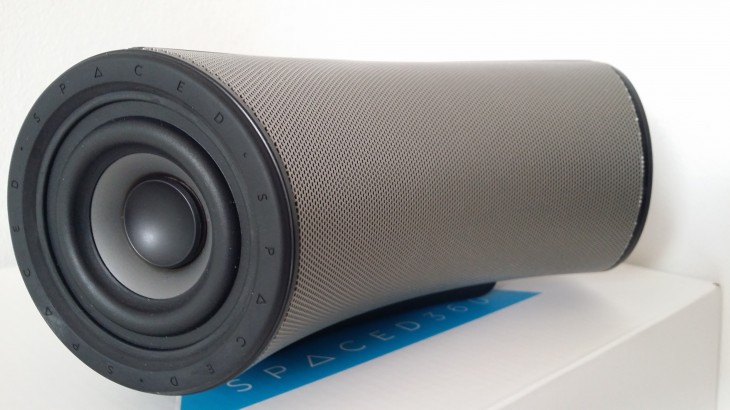
You hear a lot of buzzwords in tech. So when I met up with a spokesperson from the freshly launched Bluetooth speaker brand Spaced360 and he immediately started talking about ‘AirSound technology’, I was wary.
It’s not that these terms mean nothing, it’s just that in a lot of cases, they don’t mean a lot to the layman. And in product engineering or acoustics, I’m very much a layman. And sometimes they do just mean virtually nothing.
“AirSound means that wherever you are in a room, everyone experiences the same music, which is why we are calling this the third generation of sound,” Kevin Duffy, Chief Product Architect of the Spaced360, told TNW. “Mono was developed in the early 20s, that got developed on to stereo, and really, stereo has just been developed for the last 80 years without any fundamental breakthroughs at all. We believe AirSound is that breakthrough, as it gives you this infinite sweet-spot wherever you are in the room.”
The technology is based around the idea that when someone is talking to you, or playing an instrument or you’re listening to a DJ, most of the sound that comes to your ears is in mono, Duffy explained.
“85 percent of the energy that comes to both of your ears, comes at the same time and is the same content. And there are certain frequencies that fire in different directions from that instrument and arrive at your ears at different times. So what we’ve done is manage to isolate those frequencies and send them out of three different channels.”
One channel fills the room with mono sound, the additional two channels are also filling the room with mono sound – but with the addition of this ‘spatial sound’ that creates a uniform quality wherever you are in the room. Or so the theory goes.
Duffy notes that this is all organic audio too, there’s no manipulation of sound or complicated DSP (Digital Signal Processing) to achieve the effect; somewhat of a rarity in the portable speaker market.
That’s all very well, but what is it like and how does it sound?
My first impression of the Spaced360 is that it doesn’t look much like any Bluetooth speaker I’ve seen before. Speakers that claim to be omni-directional tend to be circular, rather than triangular.
The outside of the device is covered by three metal mesh grills. The device is available in grey or black, which is essentially choosing which color grill you want. At a briefing, I was shown a black device, but I was sent home with the grey. If I could have chosen which to test, it would have been the black – it just struck me as more sleek, but this is personal preference.
However, the color isn’t really what matters with a speaker, so I was keen to get it up and running.
In the middle is the button for pairing via Bluetooth, and around the outside of that are volume and muting controls, and lights to indicate when the battery is running low.
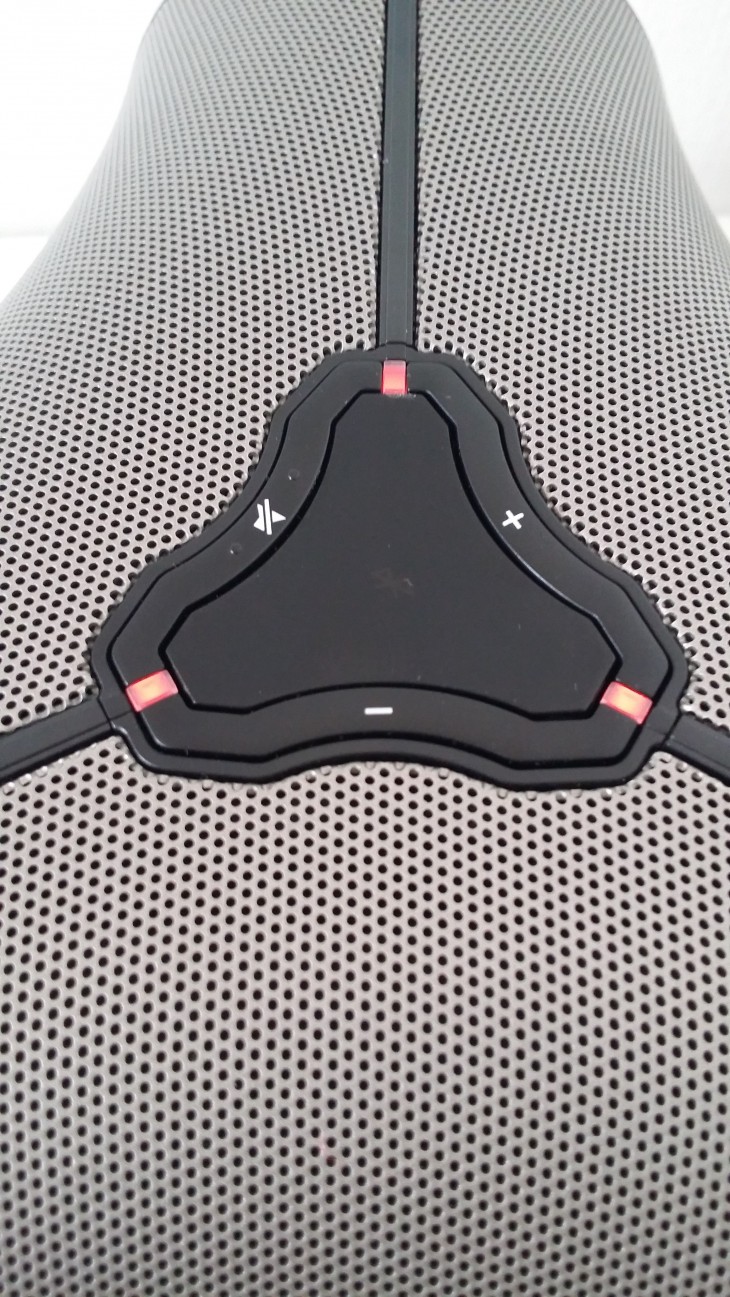
Happily, pairing a device was a breeze via NFC or Bluetooth. A quick tap of an NFC-capable device on the triangular central control button and I was ready to go. When the Bluetooth icon is solid, not flashing, you’re paired.
The lights around the Bluetooth icon indicate the battery state: green is charged and ready to go, red means it needs some juice – and flashing lights indicate that it has been muted. Pressing the Bluetooth icon will unpair it from any currently paired device and put it into Bluetooth searching mode.
It struck me as a little odd that there isn’t support for pairing with multiple devices simultaneously — it is, after all, pitched as the perfect portable device to drop into the middle of a group of friends — but Duffy told me that the company had deliberately opted to leave this feature out to maximize on battery life.
I still think it would be a nice feature to have, as it would allow a group of people to easily take it in turns to control the playlist without having to pair devices between each song or two, but I’ll concede that pairing via NFC or Bluetooth is quick and reliable enough for this not to be too much of an issue.
What I do have a bit of an issue with is how large and heavy the device is – officially measuring 22cm x 19cm x 8.8cm and weighing just over 1KG. It’s portable, but not in a particularly friendly way. For protecting the unit while being transported – and maybe just adding a dash of color – there’s also a range of different colored sleeves being offered at £30 each.
Another peeve: there’s also no integrated microphone. So, if you’re paired to a phone and it rings, as soon as you answer the call you’ll need to take it on your handset as normal, rather than the speaker acting as a hands-free kit.
The battery life of the speaker is actually dictated by the volume that you listen at – the company says an average of eight hours out of the box, which seems about right, and about three to four hours at full volume.
When it does require charging, you just need to pop it onto its proprietary charging stand, shown above, for a couple of hours.
You still haven’t said how it sounds.
The sound given off by the Spaced360 is seriously impressive, there’s no way around that, but it comes at a price.
When Duffy was telling me how there was no digital manipulation to create the ‘AirSound’ effect, I didn’t really understand how big a difference this would make in comparison to run-of-the-mill Bluetooth speakers. Now, I do.
I listened to a whole range of music, and the overall effect is definitely one that gives a more ‘live’ feel – and largely uniform experience wherever you are in the room. It’s particularly good with vocals, they come out crisp and loud. In fact, crisp is a word I’d definitely associate with the sound from the Spaced360.
The effect of filling your room with the same sound wherever you’re stood very much depends on where you place the speaker. If you put it on a coffee table in the middle of your lounge, it’ll work as intended. If you put it in the corner of the room next to your TV, you’ll obviously be able to tell that it’s coming from a particular place but it does do a better job of filling the room still.
As well as being crisp, the Spaced360 is Loud with a capital ‘L’. I actually couldn’t put it up to full volume for long stints, I live in a flat in central London and have neighbours. If I left the Spaced360 at full volume, I’d expect a complaint sooner rather than later – and long before the 3-4 hours at full volume. In fact, even during the briefing with the Spaced360, someone popped in from the room next door to ask us to turn it down as they were on a conference call. If volume is a key factor for you in a Bluetooth speaker, the Spaced360 should have enough oomph to satisfy.
There’s a price to pay for super-loud volume and clear, crisp instruments and vocals though, and that comes in the bass department. It’s a bit too subtle in some tracks, and positively lacking in particularly bass-heavy music, which is a bit of shame considering how well it performs in virtually every other respect. Given the size of the chassis, I might have expected a little more in the bass department too.
I’m sure audio purists will point out that I’m simply missing the digitally enhanced, ‘fake’ bass of more boom-y, often cheaper, systems. And perhaps I am, I like a solid kick across the board – maybe even if it has to be faked a little sometimes.
Nonetheless, if your listening habits never veer towards Jaguar Skills or anything particularly bass-oriented, then the Spaced360 is a very fine Bluetooth speaker indeed.
Buy or bye?
The Spaced 360 really splits my opinion. One moment, I found myself thinking it’s easily the best sound I’ve ever heard out of a Bluetooth speaker. And the next, I’d find myself less than impressed by a slightly muted, slightly flat bass sound. Perhaps semi-ironically for a speaker designed to be put in the middle of a group of friends, it worked best in terms of bass when placed near a wall.
So, if you’re buying on sound performance, it really will depend what you think you’ll spend most of your time listening to, and if you’re hooked on bass, you’ll probably want to give it a listen before plunging in.
It’s a tricky one in other ways too. The £250 asking price puts it firmly in Big Jambox territory. Its size and weight are also along the same sort of lines, which is to say, technically, yes, it’s portable but you really wouldn’t want to carry it around all day in your bag. Nonetheless, it’s in keeping with rivals, so if you’re looking for a portable Bluetooth speaker with better than average performance, it looks like you have to be willing to lug around a little more than a 1KG weight, whichever you go for.
Ultimately, the Spaced360 impressed me in more ways than it left me disappointed – and for that, it’s definitely one of the best portable speakers I’ve used. It’s just not quite as punchy at the low-end as I’d really love it to be. If it was, I’d recommend it to anyone that had the cash without thinking twice.
Get the TNW newsletter
Get the most important tech news in your inbox each week.
